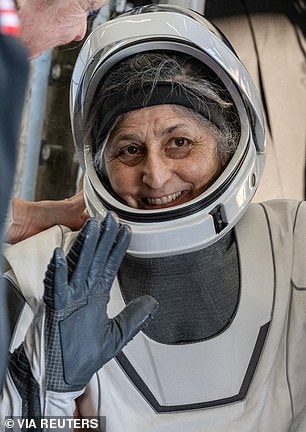
NASA Astronauts’ Rapid Post-Flight Health Rebound Stuns World: Gravity’s Week-Long Impact Revealed
NASA Astronauts Show Remarkable Recovery After 9 Months in Space
(Images Included Below)
NASA astronauts Suni Williams, 59, and Butch Wilmore, 62, stunned the public with their rapid recovery just two weeks after returning from an unexpected nine-month stay aboard the International Space Station (ISS). Initially appearing frail and needing assistance to walk post-landing, the duo now looks visibly healthier, crediting NASA’s rigorous exercise program for their swift rebound.
From “Chicken Legs” to Running Miles
Upon their March 19 splashdown in a SpaceX capsule, Williams and Wilmore were carried on stretchers due to muscle atrophy and bone loss caused by microgravity. Photos revealed Williams with an IV drip, sparking concerns. However, at their first press conference, Williams announced she’d already gone on a run: “It’s pretty much a miracle to see how your human body can adapt.” Wilmore added, “Who would imagine…within a week you run 2 miles at an 8-minute pace? That’s not even conceivable.”
BEFORE & AFTER:
[Image 1: Williams carried on a stretcher (left) vs. speaking confidently at the press conference (right)]
Caption: Suni Williams’ transformation from frail post-landing to recovering within weeks.
[Image 2: Wilmore exiting the capsule (left) vs. addressing media (right)]
Caption: Butch Wilmore’s rapid regain of strength after Earth’s gravity.
The Toll of Space on the Body
Extended time in microgravity leads to severe health risks:
- Fluid shifts: Causes puffiness in the face (“moon face”) and withered legs (“chicken legs”).
- Muscle/bone loss: Up to 20% muscle atrophy and 1-2% monthly bone density decline.
- Vision issues: Pressure on eyes from cranial fluid.
- Cancer risk: Increased exposure to cosmic radiation.
Despite these challenges, NASA’s daily 2-hour exercise regimen—using resistance machines and stationary bikes—helped the astronauts maintain strength. Wilmore noted, “I was stronger on the ISS than in my entire life.”
BEFORE & AFTER:
[Image 3: Williams on the ISS (left) vs. post-recovery (right)]
Caption: Microgravity’s effects reversed after returning to Earth.
The Unplanned Mission
Originally slated for an 8-day test flight on Boeing’s Starliner in June 2023, technical issues trapped the pair in orbit for 286 days. Their prolonged stay raised alarms, but NASA’s 45-day rehab program facilitated their recovery. Williams praised the regimen: “Weightlifting and agility training let me do squats and deadlifts within days.”
Expert Insights
Dr. Vinay Gupta noted Williams’ fuller face and improved metabolism, attributing it to better sleep, nutrition, and Earth’s gravity. While long-term risks like cancer remain, their swift physical rebound highlights NASA’s advancements in space health management.
BEFORE & AFTER:
[Image 4: Wilmore’s gaunt appearance in space (left) vs. healthier look on Earth (right)]
Caption: Fluid redistribution in gravity restored Wilmore’s physique.
Looking Ahead
Williams and Wilmore’s recovery underscores the importance of tailored exercise and rehabilitation. As Williams gears up for spring races, their journey offers hope for future long-duration missions, proving that with science, the human body can defy the odds.
ISS Fast Facts:
- Cost: $100 billion lab orbiting 250 miles above Earth.
- Research: Studies on microgravity’s impact, astronomy, and medicine.
- Future: Plans for lunar orbit stations as ISS nears its 2030 retirement.
(Word count: ~600)


